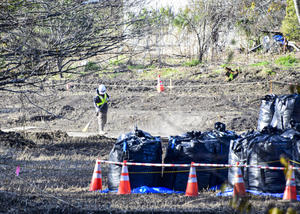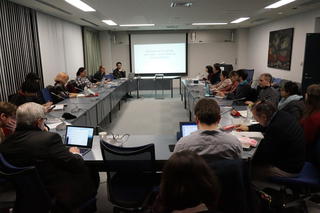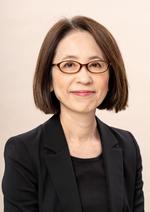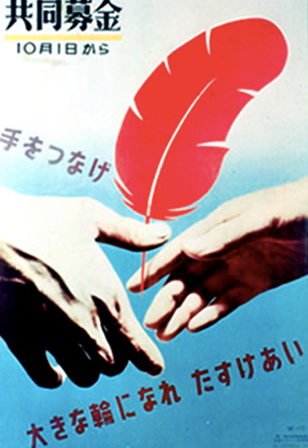2021年3月のイベント
- モダンガール、時代を牽引した女たち
- コンクリートの津波、2011年3月11日から10年後の三陸の復興まちづくり
- Dix ans après Fukushima, la grande désillusion ?
- 博士課程の学生のためのセミナー
- Women and COVID-19: A Serious Impact on Work and Family
- Solidarity and Mutual Aid in Modern and Contemporary Japan (1603-2020)
| 日時: | 2021年03月06日(土) 17:00〜20:30 |
|---|---|
| 場所: | オンライン |
| 講演者: | 秦佳代(北海道大学大学院文学研究科)、木村信子(東洋大学人間科学総合研究所)、中山信子(早稲田大学演劇博物館)、西尾治子(日仏女性研究学会代表)、サンドラ・シャール(ストラスブール大学)、志田道子(フリーライター)、新行内美和(日仏女性研究学会)、吉川佳英子(愛知工業大学) |
<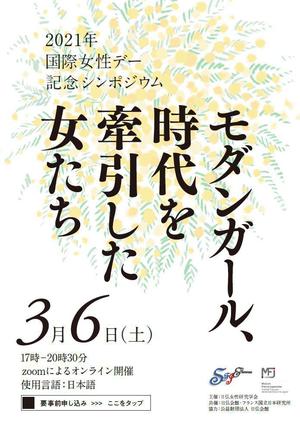
Cliquer sur l'image pour plus d'informations. こちらのイベントは、Zoomを使って行います。
プログラム: [17:00-17:15] 第一部 モダンガール、ジェンダー規範を逸脱した女たち[ 17:15-18:20 ] 「≪魔女≫にみる日仏の女性表象の変遷 第二部 モダンガール、新天地を切り拓いた女たち[ 18:30-20:00 ]
閉会の辞 棚沢直子(フランス研究者) 【主催】日仏女性研究学会 |
* イベントは、特に記載のない限り、すべて無料となっております。参加をご希望の方はお申し込みをお願いいたします。
| 日時: | 2021年03月11日(木) 18:00〜19:30 |
|---|---|
| 場所: | オンライン |
| 講演者: | レミ・スコシマロ(トゥールーズ・ジャン・ジョレス大学、日仏会館・フランス国立日本研究所) |
|
日本の沿岸部における景観は、産業革命以前から既に人の手によって様変わりしていたが、欧米技術の導入により、そして特に高度経済成長期にさらに加速的に変貌を遂げた。三陸では次々に巨大な防潮堤が造られ、住民の海との関わり方を大きく変えていく一方、防潮堤のおかげで海抜の低い沿岸部低地でも新たな開発が可能になった。 ところが東日本大震災時の津波に対し持ちこたえた防潮堤は皆無だった。それにも関わらず防潮堤の再建築が必要とみなされ、新たに山が削られ嵩上げが行われ、以前にも増して巨大な防潮堤が造られていった。こうして沿岸部の景観は一層の変貌を遂げつつある。巨大堤防の建設は “コンクリートの津波”ともいえる勢いで沿岸区域を覆いつくしつつある。地域住民は海からより一層隔てられ、他方、住民は以前にも増して国政・県政・建設グループ等開発者側に依存せざるを得なくなっている。しかしこれら巨大防潮堤はどこまで沿岸地域保護に役立つのだろうか。 【講師】レミ・スコシマロ(トゥールーズ・ジャン・ジョレス大学、日仏会館・フランス国立日本研究所) 【司会】アドリエンヌ・サラ(日仏会館・フランス国立日本研究所) 【主催】日仏会館・フランス国立日本研究所 |
* イベントは、特に記載のない限り、すべて無料となっております。参加をご希望の方はお申し込みをお願いいたします。
| 日時: | 2021年03月22日(月) 18: 00 - 20 : 00 |
|---|---|
| 場所: | オンライン |
| 講演者: | Rémi Scoccimarro (Univ. Toulouse Jean-Jaurès) |
|
Travaux de décontamination dans la zone interdite de Fukushima©️Scoccimarro 2019
Cliquer le lien suivant pour écouter la conférence : https://teams.microsoft.com/dl/launcher/launcher.html?url=%2F_%23%2Fl%2Fmeetup-join%2F19%3Ameeting_YmFlYzJmNzAtMjBhMS00NDdiLTkwYmEtYjdmNTQ5MjgxMTM2%40thread.v2%2F0%3Fcontext%3D%257b%2522Tid%2522%253a%2522b0a81982-5742-414a-8c03-22132dd791a0%2522%252c%2522Oid%2522%253a%2522bfa508c1-8114-4903-9396-4760a1a89525%2522%257d%26anon%3Dtrue&type=meetup-join&deeplinkId=c5e7cda8-4e07-4ac1-917f-6191c9761efa&directDl=true&msLaunch=true&enableMobilePage=true&suppressPrompt=true
Lorsqu’il survient, dans un contexte de catastrophes naturelles (séisme et tsunami majeurs), l’accident nucléaire de Fukushima semblait amorcer le début de nombreuses ruptures. Cet événement a bouleversé le secteur de l'énergie : production, consommation, politique... Et l'opinion publique s'est également interrogé sur les suites à donner après ces événements. Depuis, combien de fois, au Japon ou ailleurs, n’a-t-on pas entendu pendant ces 10 années le terme de « post-Fukushima », pour presque tout, et souvent n’importe quoi ? Pour continuer à se questionner en regardant si le 11 mars a réellement changé la donne, nous examinerons d’abord comment la catastrophe de « Fukushima n°1 » et le tsunami, sont des co-productions, au sein desquelles les choix de la société japonaise d’après-guerre comptent autant que l’aléa naturel (un variant tout sauf aléatoire au Japon). Parallèlement, on tentera d’expliquer le dilemme présent au Japon entre une énergie sur-nucléarisée ou sur-carbonée. La difficulté de quitter le nucléaire s'entrechoque avec les relations tissés par le PLD (Parti Libéral Démocrate) au pouvoir et certaines localités. Elle met en avant les freins à engager l'énergie renouvelable. S’agissant de la reconstruction des territoires dévastés, par le tsunami comme par la contamination radioactive, là aussi peu d'évolutions, et même au contraire une fuite en avant avec l’édification de digues et de barrages pharaoniques, qui tiennent peu compte de certains enseignements de la catastrophe du 11 mars. 10 ans après, les paradigmes semblent les mêmes. Est-ce alors la fin des illusions de changements dans l'archipel ? Modérateurs : Serge Marti (APFJ), Mathieu Rocher (APFJ), Ayana Nishikawa (APFJ) Organisation : Association Presse France Japon (APFJ), IFRJ-MFJ |
* イベントは、特に記載のない限り、すべて無料となっております。参加をご希望の方はお申し込みをお願いいたします。
| 日時: | 2021年03月23日(火) 18:00〜20:00 |
|---|---|
| 場所: | オンライン |
* イベントは、特に記載のない限り、すべて無料となっております。参加をご希望の方はお申し込みをお願いいたします。
| 日時: | 2021年03月26日(金) 12:30–14:00 |
|---|---|
| 場所: | Online |
| 講演者: | SHIRAHASE Sawako (The University of Tokyo) |
|
Please click the link below to join the webinar:
Passcode: 9meyW5
For more information on how to join, please visit: https://support.zoom.us/hc/en-us/articles/115004954946-Joining-and-participating-in-a-webinar-attendee-
|
* イベントは、特に記載のない限り、すべて無料となっております。参加をご希望の方はお申し込みをお願いいたします。
| 日時: | 2021年03月31日(水) 9:30–18:00 |
|---|---|
| 場所: | Online |
| 講演者: | Sophie BUHNIK (FRIJ-MFJ), Nobuo HARUNA (TUFS), François LACHAUD (EFEO), Guillaume LADMIRAL (FRIJ-MFJ), John PORTER (TUFS), Martin NOGUERA RAMOS (EFEO), Adrienne SALA (FRIJ-MFJ), Bernard THOMANN (FRIJ-MFJ), Tsutomu TOMOTSUNE (TUFS) |
|
Lunch 13:30 |
* イベントは、特に記載のない限り、すべて無料となっております。参加をご希望の方はお申し込みをお願いいたします。
日仏会館フランス事務所 / イベント・カレンダー > 2021年3月









